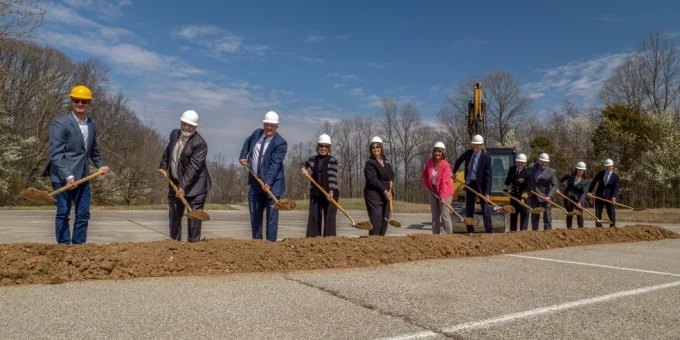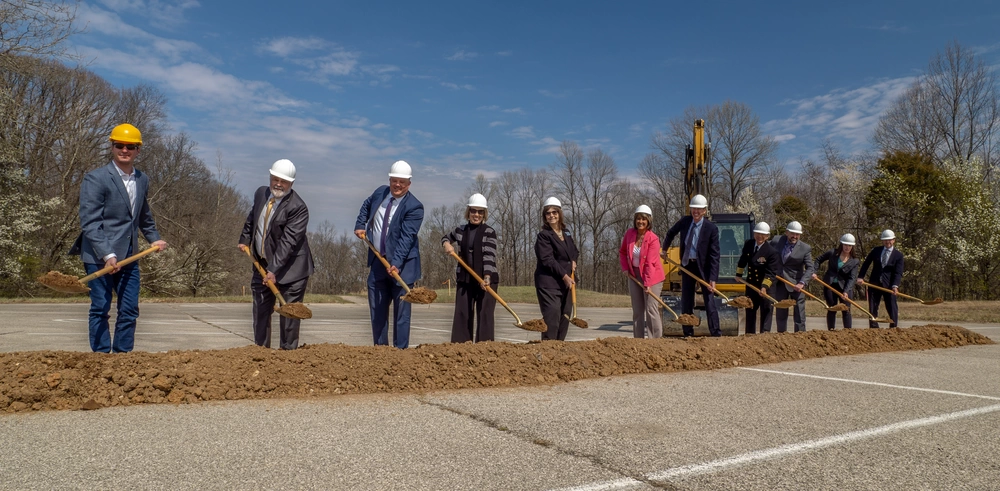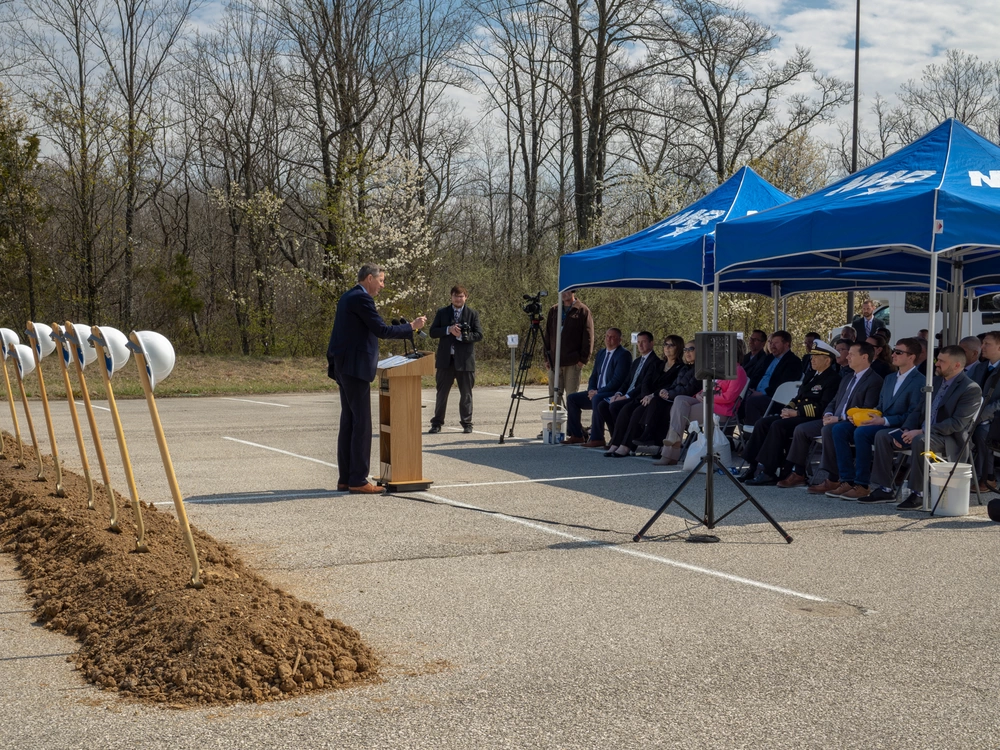
CRANE – Naval Surface Warfare Center, Crane Division (NSWC Crane), held a groundbreaking ceremony on Thursday, March 21, for a new strategic and hypersonics research, development, test, and evaluation (RDT&E) facility. The Missile Technology Evaluation Facility (MTEF) provides a new capability for NSWC Crane to ensure reliable performance of strategic hypersonics systems and is planned to be completed at the end of 2025.

“The MTEF capability serves the Navy’s priorities to maintain the world’s most powerful Navy—and the infrastructure that sustains it,” said Dr. Brett Seidle, SES, Deputy Assistant Secretary of the Navy RDT&E. “NSWC Crane has leveraged resources to bolster integrated deterrence and improve the infrastructure that directly impacts the Navy’s warfighting efficacy.”

MTEF supports the Department of Defense’s (DOD) priorities of ensuring the foundations for research and development through revitalizing physical infrastructure.
“NSWC Crane is a national leader in hypersonics,” said Dr. Angela Lewis, SES, Technical Director at NSWC Crane. “MTEF provides the fleet with a research testbed to support analysis of glide body avionics hardware and software. Our breadth and depth of this strategic expertise positions us to successfully execute current and future mission requirements.”
Hypersonics weapons fly at a minimum Mach 5, which is five times the speed of sound. Ballistic missiles can reach similar speeds, but on a relatively fixed path. Hypersonic technology allows the vehicle to fly at lower altitudes, be very maneuverable, and change course during flight. The latest Missile Defense Review states that missile-related threats have rapidly expanded in quantity, diversity, and sophistication, meaning the United States will continue to rely on strategic deterrence.
NSWC Crane leveraged internal funding for MTEF and adds to the growing suite of DOD investments and capabilities supporting hypersonics. These include the development of the Underwater Launch Test facility, model-based systems engineering (MBSE), an HWIL/SWIL test bed, modeling and simulation lab, the Joint Hypersonics Transition Office (JHTO) Systems Engineering Field Activity (SEFA), and Innovation Capability and Modernization (ICAM) SEFA.
About NSWC Crane | NSWC Crane is a naval laboratory and a field activity of the Naval Sea Systems Command (NAVSEA) with mission areas in Expeditionary Warfare, Strategic Missions, and Electromagnetic Warfare. The warfare center is responsible for multi-domain, multi-spectral, full-life-cycle support of technologies and systems that enhance the capability of today’s Warfighters.
Join Our Team! NAVSEA employs a diverse, highly trained, educated, and skilled workforce – from students and entry-level employees to experienced professionals and individuals with disabilities. We support today’s sophisticated Navy and Marine Corps ships, aircraft, weapon systems, and computer systems. We are continuously looking for engineers, scientists, IT, cyber specialists, trade, and other support professionals to ensure the U.S. Navy can protect and defend America. Please get in touch with NSWC Crane Human Resources at crane_recruiting@navy.mil.



